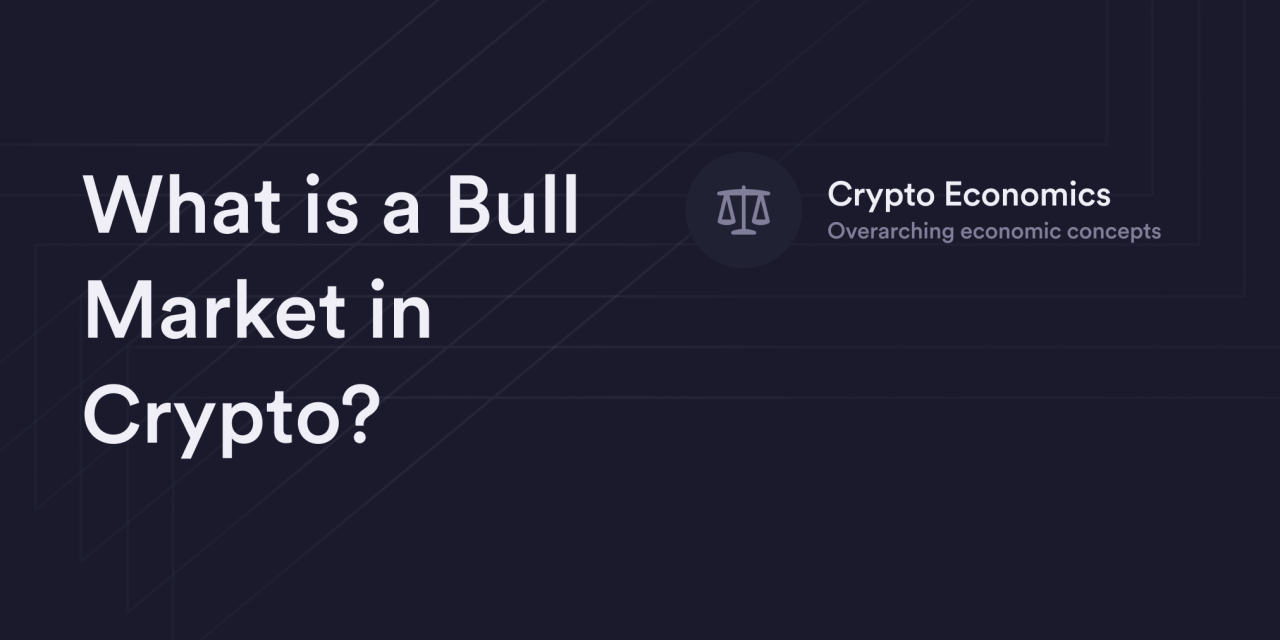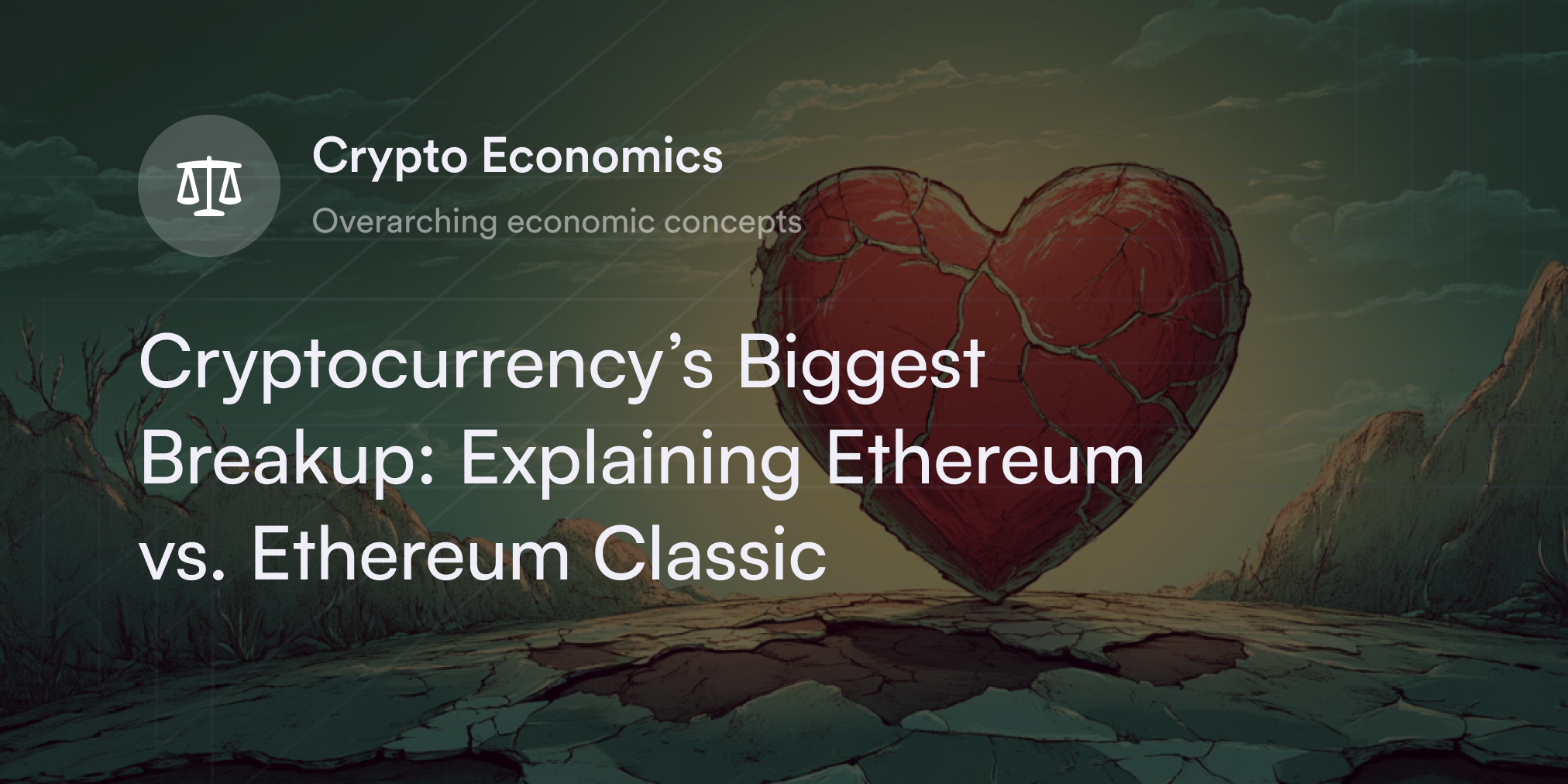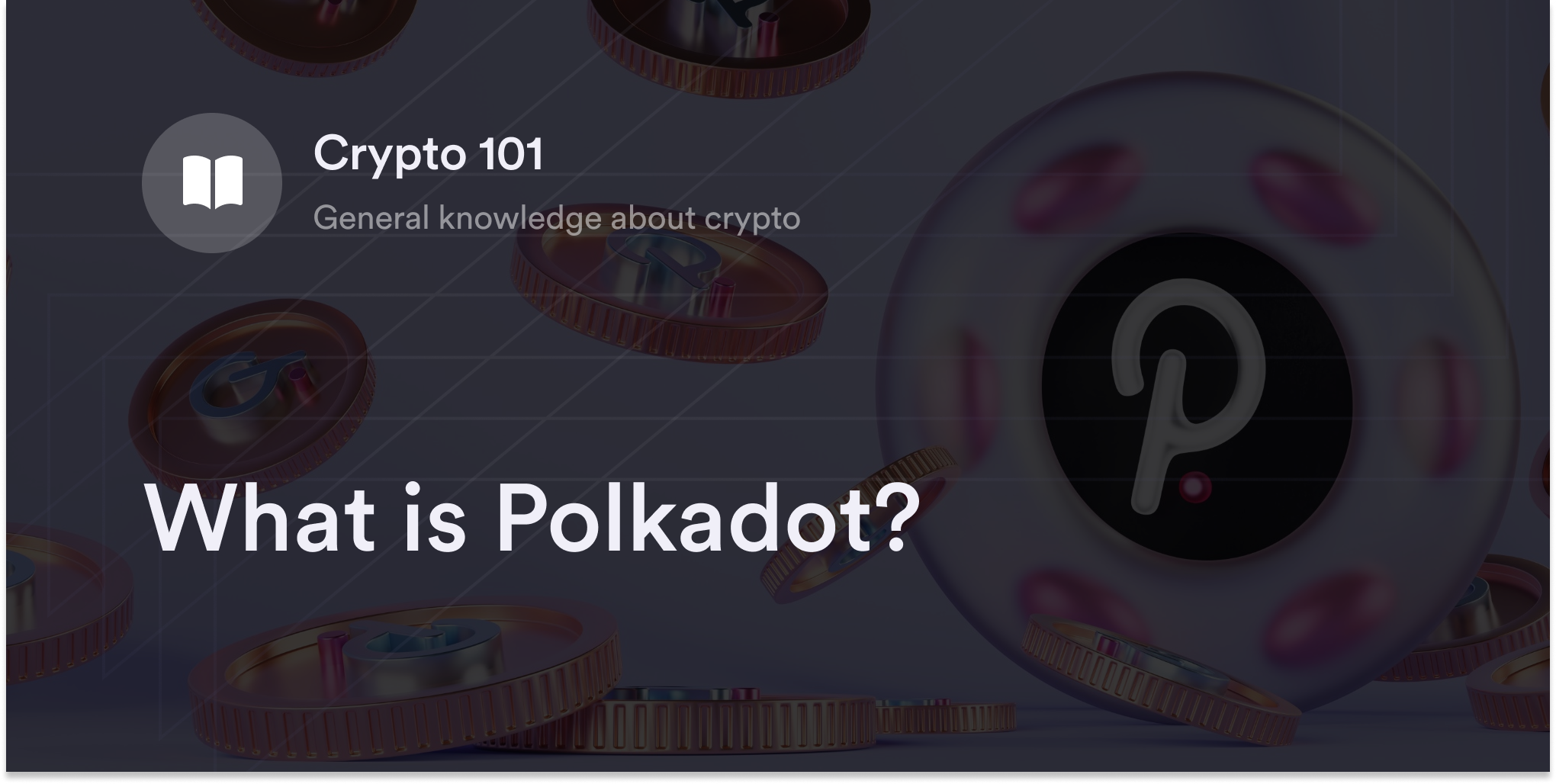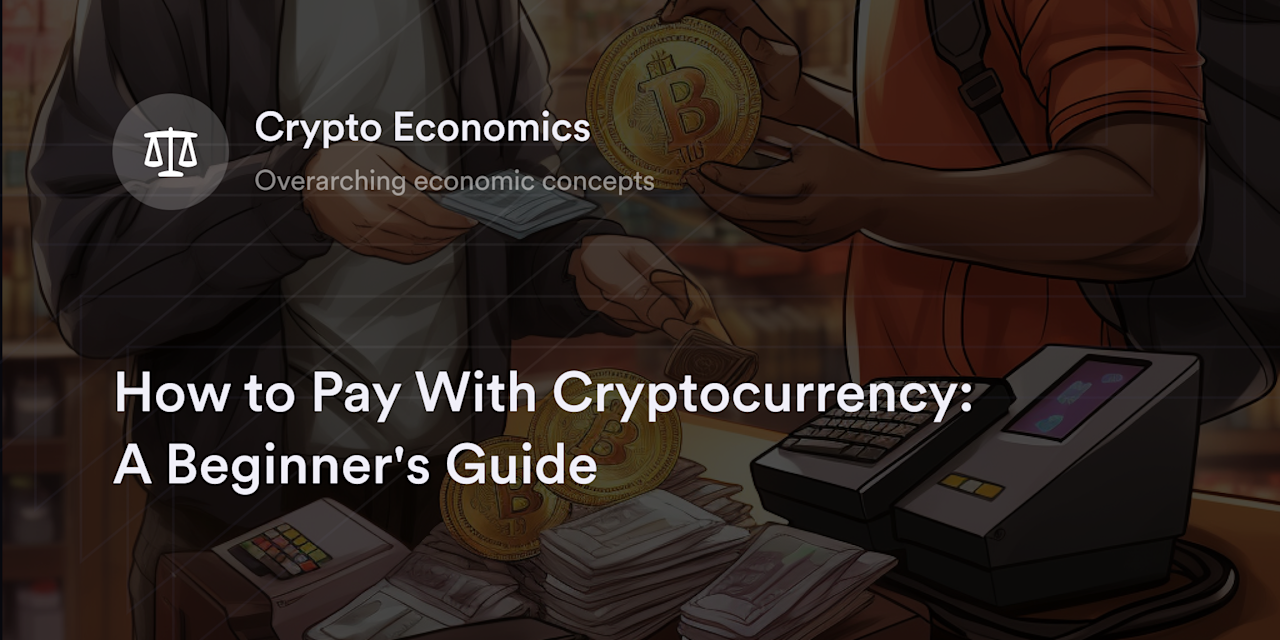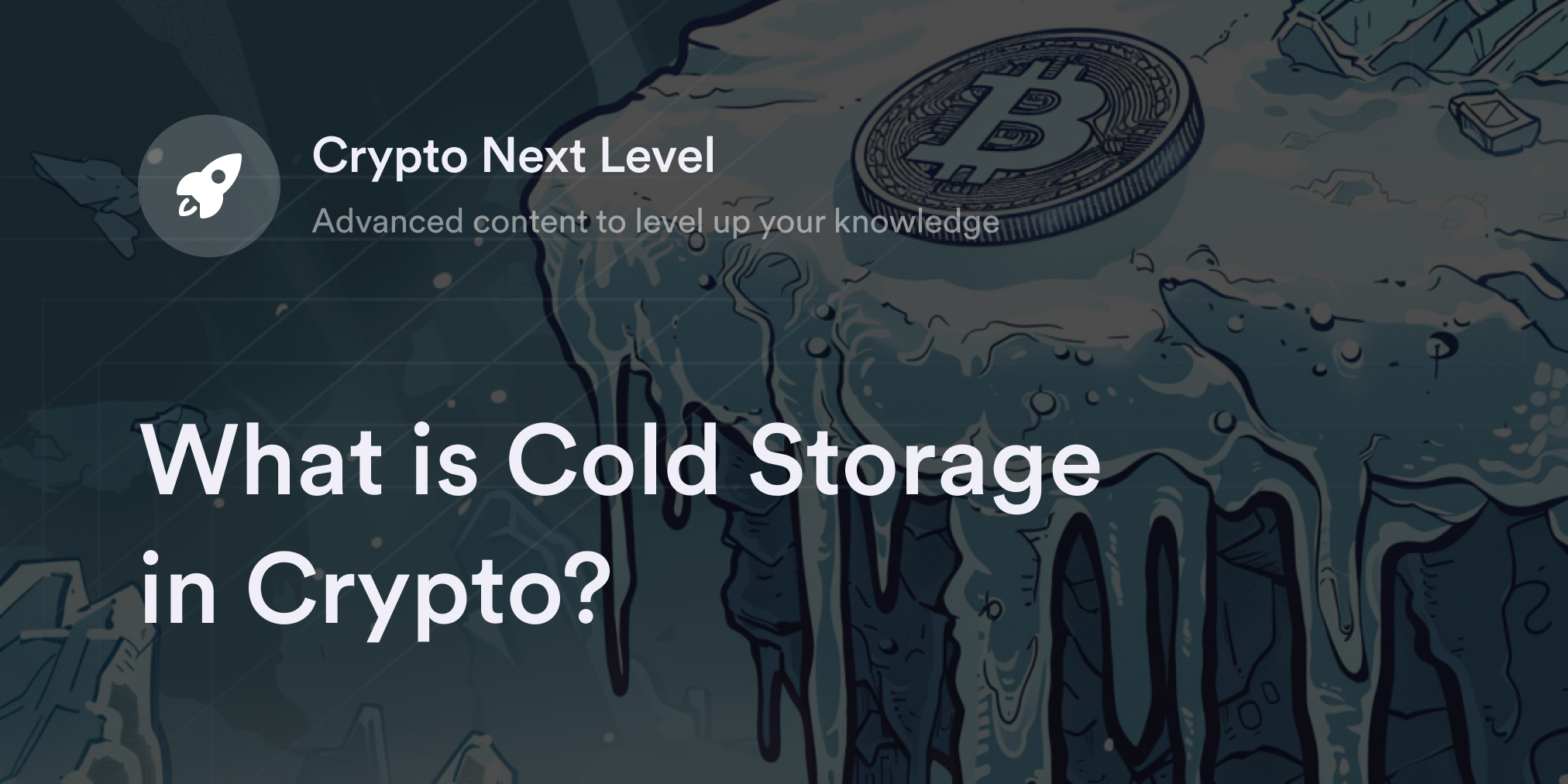
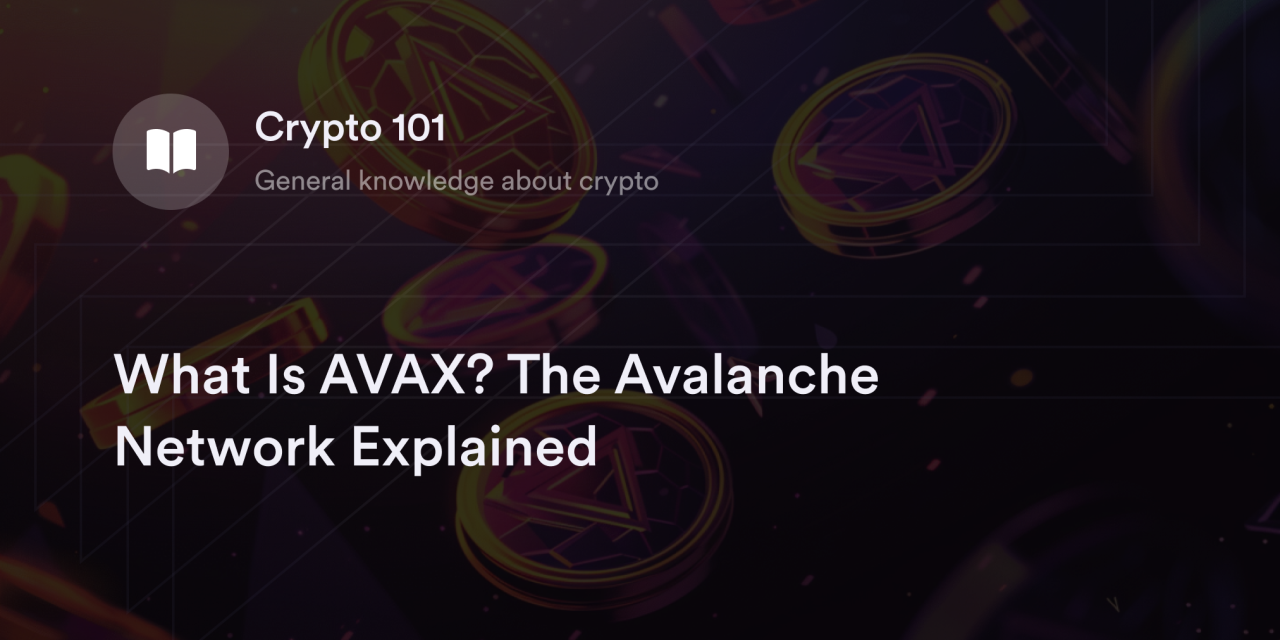

In terms of developer activity and market cap, Ethereum (ETH) is the king of smart contract blockchains. While few crypto fans deny Ethereum's leading position in Web3, even ETH bulls have concerns over the legacy blockchain's scalability. The cost to use the Ethereum blockchain (or "gas fees") frequently jumps during times of high traffic, and the average confirmation speed still hovers around 30 transactions per second.
Rather than waiting for Ethereum to address these issues, some programmers have developed "ETH-like" experiences with lower fees and near-instant transaction confirmations. The Avalanche (AVAX) Network is one such Ethereum competitor causing a snowstorm in the cryptocurrency market.
Following its 2020 launch, Avalanche’s AVAX token ascended near the peak of the crypto market, and it remains an actively traded digital asset on centralized and decentralized exchanges. Here, we’ll tell you more about what AVAX is, what it offers, and how to get involved in the AVAX ecosystem.
What is the Avalanche crypto network?
Avalanche is a blockchain protocol that uses a Proof-of-Stake (PoS) algorithm and smart contract technology to help third-party developers create and deploy decentralized applications (dApps). Although Avalanche's core features mimic other PoS smart contract chains like Ethereum, it uses a distinct multi-blockchain architecture for superior transaction finality and seamless communication between crypto networks (aka blockchain interoperability).
Avalanche also integrates with the Ethereum Virtual Machine (EVM) and uses Ethereum's Solidity coding language to help developers integrate dApps on both cryptocurrency ecosystems. Avalanche aims to offer a fast, safe, and scalable platform for exchanging digital currencies on multiple decentralized protocols and across various blockchains.
The history of Avalanche dates back to 2018 when the pseudonymous group "Team Rocket" released the first sketch of this blockchain's design. Following Team Rocket's initial report, Cornell University's Dr. Emin Gün Sirer created the New York-based company AVA Labs to refine and implement these software ideas. AVA Labs launched the Avalanche mainnet in 2020, and traders spent $230 million in an initial coin offering (ICO) for the blockchain's AVAX cryptocurrency one year later.
How does Avalanche work? Explaining the basic mechanics
Many aspects of Avalanche's blockchain resemble other PoS chains like Cosmos (ATOM) or Polkadot (DOT), but a few nuanced traits set AVAX apart. Notably, Avalanche created an intricate and idiosyncratic triple blockchain architecture to offer novel use cases in Web3.
Avalanche PoS consensus algorithm
Similar to other PoS chains, the computers (aka nodes) powering Avalanche need to lock (or "stake") the blockchain's native cryptocurrency to take part in transaction validation. In this case, validator nodes on Avalanche must stake at least 2,000 AVAX tokens to start confirming transactions. However, Avalanche lets crypto traders delegate AVAX to validator pools to receive partial staking rewards, provided they contribute at least 25 AVAX. The more tokens a validator stakes on-chain, the greater their chances of participating in validation and receiving AVAX rewards.
Rather than recording transactions in a linear block-by-block format, Avalanche uses a Directed Acyclic Graph (DAG) framework to organize its transfer data and achieve consensus. Unlike a traditional blockchain ledger, DAGs don't need to wait for a previous block to clear before moving on to the next batch of transactions. Instead, transactions post on Avalanche's DAG as they occur in a graph-like pattern rather than a string of chained blocks. Avalanche blockchain nodes determine the validity of incoming transactions using the Snowball Algorithm, in which validators vote on each transaction value until everyone on the network agrees.
Another unique feature of Avalanche's validation process is it doesn't impose a "slashing" penalty on validators. On some PoS blockchains like Ethereum, the consensus algorithm automatically cuts (or "slashes") a node's staked cryptocurrency if it submits invalid data. While the Avalanche algorithm won't reward new AVAX tokens to nodes who send incorrect information, it won't take staked AVAX out of a node's account.
What are Avalanche's three blockchains?
One of the distinguishing features of Avalanche's design is its triple-layer blockchain construction. Instead of broadcasting, processing, and recording transactions on one PoS chain, Avalanche delegates different tasks to three separate blockchains to prevent bottlenecks. Avalanche's tripartite architecture seeks to offer maximum flexibility, speed, and scalability without sacrificing security or decentralization.
X-Chain: Short for "exchange," Avalanche's X-chain is the base PoS DAG layer solely focused on transferring AVAX tokens.
C-Chain: The "C" in "C-chain" stands for "contract," which refers to this layer's smart contract functionality. This is the layer developers use to create Avalanche dApps or port them to Ethereum-compatible blockchains through the EVM.
P-Chain: The P-chain (or "Platform-chain") is where Avalanche validators stake their AVAX and verify network transactions. Data related to Avalanche's sovereign "subnets" also occurs on the P-chain.
Avalanche subnets explained
Avalanche also gives Web3 programmers the freedom to create independent blockchain-like networks known as subnetworks (or "subnets") on its P-chain. Although subnets rely on Avalanche's base layer security protocol, they're free to use whatever coding standards or consensus algorithms best fit their specific ecosystem. Subnet owners also have the right to enforce special screening requirements for validators if they don't want their network to be open-source and permissionless. For those familiar with the sovereign blockchains on competing crypto projects (e.g., Cosmos's "zones" or Polkadot's "Parachains"), Avalanche's subnets have similar characteristics.
What are the benefits of the AVAX Network?
The AVAX team aims to create a secure and scalable platform that incorporates and improves upon the EVM's accomplishments. Similar to "layer 0" projects like Cosmos, Avalanche envisions its blockchain as a foundation layer for bridging gaps in the current crypto landscape to offer traders and developers a seamless Web3 experience.
Speed and efficiency: Avalanche's decision to use a multi-layer blockchain and a non-linear DAG consensus model gives it one of the fastest transaction throughputs in cryptocurrency. Estimates suggest Avalanche handles thousands of transactions per second with a finality of no more than three seconds.
Cheap fees: Another benefit of Avalanche's dynamic design is its low average fees, typically a few pennies or less per transaction. The low cost to transfer value on Avalanche increases the blockchain’s usability and scalability.
Compatibility with Ethereum: Avalanche makes it easy for developers in the Ethereum ecosystem to build and bridge digital assets or dApps between networks, and many prominent projects like Aave already have Avalanche integrations. The safe and streamlined connection between Avalanche and Ethereum helps developers tap into AVAX's value propositions and brings decentralized services to a broader audience.
Eco-friendly: Avalanche often ranks as one of the cleanest blockchains with a negligible energy output and carbon footprint. According to the Crypto Carbon Ratings Institute, Avalanche consumes 0.0005% of the energy it takes to process comparable transactions on Bitcoin.
What is AVAX? Explaining the Avalanche token
The AVAX token is Avalanche's native cryptocurrency and serves multiple functions within the blockchain's ecosystem. First, traders need AVAX to pay for services and fees on Avalanche-based dApps or subnets. Node operators on Avalanche stake AVAX tokens to participate in the validation process, and they receive AVAX rewards as an incentive for submitting transaction data. AVAX is also a "governance token," meaning anyone with AVAX in their crypto wallet can use their tokens as votes for Avalanche improvement proposals.
Since Avalanche's 2021 launch, many centralized and decentralized crypto exchanges offer AVAX trading pairs. To find the latest list of platforms offering AVAX tokens, visit a cryptocurrency price aggregator website like CoinMarketCap or CoinGecko and search for "Avalanche" or "AVAX.” On Avalanche's official page, click the "Exchanges" tab to find a complete list of the current sites offering AVAX trading services.
AVAX perps are live on dYdX
Are you an eligible trader who wants to add AVAX price exposure to a crypto portfolio? dYdX has you covered. On our industry-leading decentralized exchange, traders choose from dozens of crypto perpetual contracts, including popular Ethereum competitors like AVAX. For more info on dYdX's offerings, visit our official blog for news and feature upgrades. Also, check out dYdX Academy for more guides on the latest developments in blockchain tech, and eligible traders can start trading on dYdX today.
Terms & Conditions and Disclosures
The content of this article (the “Article”) is provided for general informational purposes only. Reference to any specific strategy, technique, product, service, or entity does not constitute an endorsement or recommendation by dYdX Trading Inc., or any affiliate, agent, or representative thereof (“dYdX”). Use of strategies, techniques, products or services referenced in this Article may involve material risks, including the risk of financial losses arising from the volatility, operational loss, or nonconsensual liquidation of digital assets. The content of this Article does not constitute, and should not be considered, construed, or relied upon as, financial advice, legal advice, tax advice, investment advice, or advice of any other nature; and the content of this Article is not an offer, solicitation or call to action to make any investment, or purchase any crypto asset, of any kind. dYdX makes no representation, assurance or guarantee as to the accuracy, completeness, timeliness, suitability, or validity of any information in this Article or any third-party website that may be linked to it. You are solely responsible for conducting independent research, performing due diligence, and/or seeking advice from a professional advisor prior to taking any financial, tax, legal, or investment action.
You may only use the dYdX Services in compliance with the dYdX Terms of Use available here, including the geographic restrictions therein.
Any applicable sponsorship in connection with this Article will be disclosed, and any reference to a sponsor in this Article is for disclosure purposes, or informational in nature, and in any event is not a call to action to make an investment, acquire a service or product, or purchase crypto assets. This Article does not offer the purchase or sale of any financial instruments or related services.
By accessing this Article and taking any action in connection with the information contained in this Article, you agree that dYdX is not responsible, directly or indirectly, for any errors, omissions, or delays related to this Article, or any damage, injury, or loss incurred in connection with use of or reliance on the content of this Article, including any specific strategy, technique, product, service, or entity that may be referenced in the Article.
